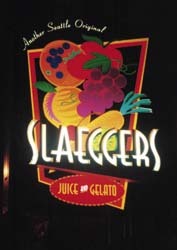Matching colors is a process that involves more time and care than many people realize. Factors such as lighting, backdrop or a substrate’s finish can affect a color’s appearance to an end-user. Therefore, the perception of a color in a specific application may yield a very different result in another use if these factors differ. This contradicts a popular assumption that colors maintain the same appearance under various lighting conditions.
I presented a seminar on color and appearance at the 2000 Identity Management conference that addressed several factors affecting color perception.
We put the presentation together to help give people a basic understanding of color and address some of the difficulties that can occur when asking a supplier for a proper color match. This column will reprise some of the key points made at the seminar.
How color occurs
The light we see is a visible radiation of many different wavelengths. Although the colors we see appear infinite, in reality it’s only a small part of a large collection of wavelengths called the electromagnetic spectrum. The wavelengths range from 10-4A to 1011m, including frequencies such as X-rays, radio and radar. Our eyes, however, only respond to visible light, which is only a 300nm range (a nanometer is a billionth of a meter).
White light is made up of all colors of the spectrum — red, orange, yellow, green, blue, indigo and violet, or the well-known acronym "Roy G. Biv." The color of an apple is red because it reflects the red portion of white light back to the observer. The color you see is very dependent on light source. The depth of the red reflected to your eyes is the amount of red contained in the light source.
Daylight has a relatively even distribution of all colors of light. Incandescent light, however, is very rich in reds, oranges and yellows, but has practically no blues and violets. This makes colors appear differently under daylight than incandescent light.
A very common example is the difficulty of telling the difference between navy blue and black. A man, for instance, can put on a navy-blue sock and black sock under incandescent lighting in his home, and think they are the same color. When he gets into daylight, however, he sees the mistake he’s made. This is because daylight contains more blue wavelengths than incandescent light.
When a color sample and standard match under one lighting condition but not another, the discrepancy is called metamerism. An example would be finding a color swatch to match a couch in a home, under incandescent light, and finding a color that looks like a match at a store, under fluorescent light. When you return home, you find the swatch doesn’t match. This underscores the importance of examining colors under the correct light source.
Know the needs
With this in mind, it’s important for vinyl fabricators to discuss with clients the environment in which they will use the product. Fabricators should find out whether:
- The application is going to be indoors or outdoors;
- It will employ incandescent, fluorescent or another type of lighting; and
- If backlighting will be involved.
I tell my customers not to take colors home to approve them. The application’s illumination will almost always be different than the light in someone’s home, so a shade that looks great in incandescent lighting appears very different in an outdoor environment.
Lighting isn’t the only factor — finish will also affect vinyl’s appearance. In general, the higher the gloss, the darker an object will appear. Gloss, also called specular reflection, occurs due to a small fraction of white light, usually 1-10%, that reflects back to the viewer as white "highlights." Different light distributions cause colors to appear differently due to reflection, even though the colors are the same.
Vinyl thickness is also a key factor in determining optimal use of color and lighting. Translucent films are backlit, meaning the color is a transmitted color. This means the light source is shown through the film, and the thickness directly affects the color. A difference of .2 mil in a 2-mil vinyl can make a visible difference in transmitted color.
Opaque films, however, produce reflected color. Light shows onto the surface the film, and the color seen is the surface color. Thickness isn’t a factor with these types of films.
Do you speak colors?
While the color of a sign may not communicate as directly as its verbal content, color usage undoubtedly sends a message to viewers. We identify with certain feelings — red means hot, blue means cold, a bright color such as yellow means cheerful, gray means gloomy, etc. A good color choice requires some thought.
A subdued navy blue, for example, wouldn’t convey the proper atmosphere for a trendy Tex-Mex restaurant, and a feisty red or orange would be inappropriate for a conservative bookstore.
When the correct color has been chosen, preserving it becomes the next priority. If you don’t choose the proper vinyl and lighting for an application, the color won’t be as effective. For example, consider Blockbuster Video’s signage– a robust blue and gold. If the vinyl is not the right color or sufficiently thick when backlit, the backdrop and text will show up faded or off-color. To a viewer, it conveys an image of a business that’s not doing well, or bearing a "copycat" appearance.
Selecting colors via the Pantone


 Tip Sheet3 days ago
Tip Sheet3 days ago
 Business Management2 weeks ago
Business Management2 weeks ago
 Women in Signs2 weeks ago
Women in Signs2 weeks ago
 Real Deal4 days ago
Real Deal4 days ago
 Editor's Note1 week ago
Editor's Note1 week ago
 Benchmarks14 hours ago
Benchmarks14 hours ago
 Line Time2 weeks ago
Line Time2 weeks ago
 Product Buying + Technology1 week ago
Product Buying + Technology1 week ago



















